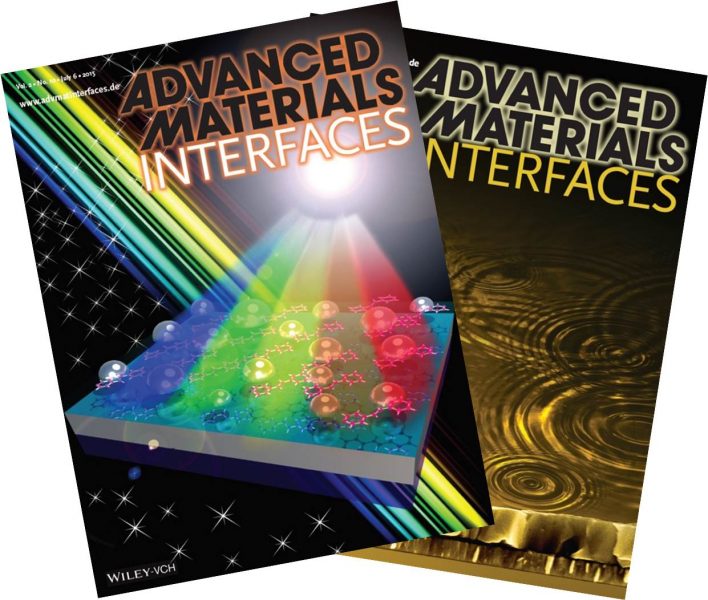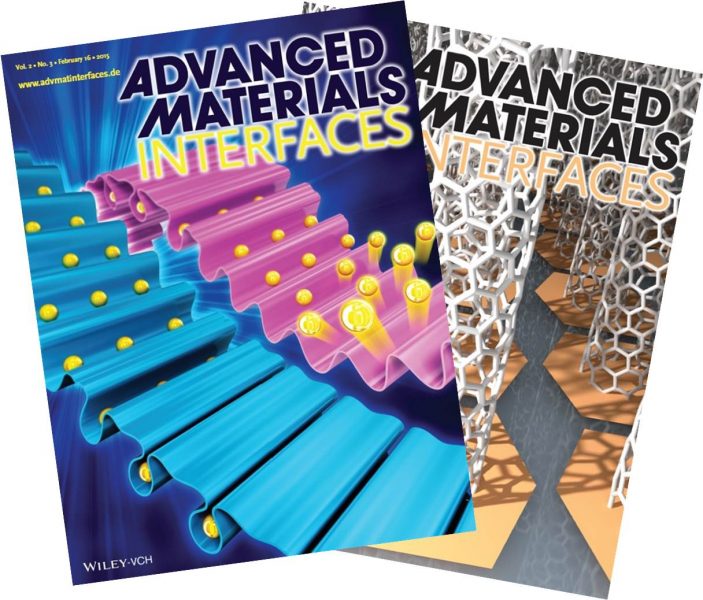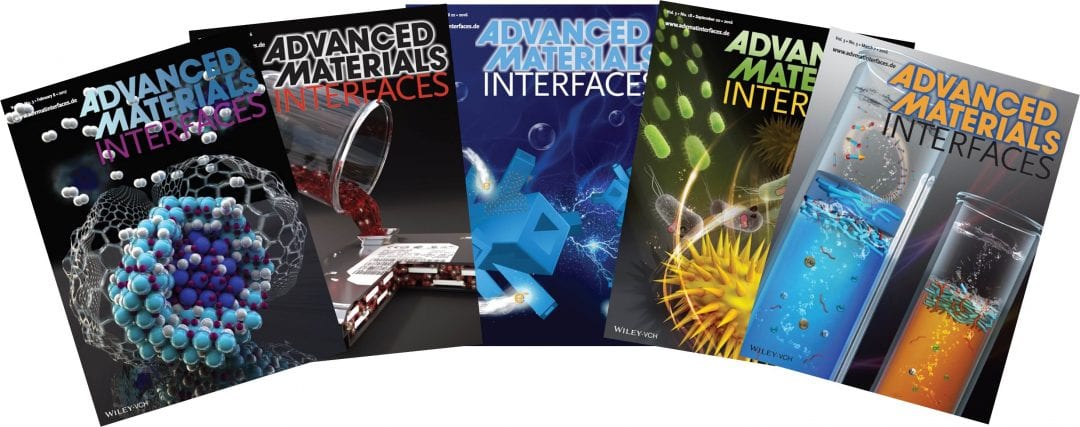The vote is in: topical reviews from the Advanced Materials Interfaces Hall of Fame series are among the most popular articles on offer to our readership. Written by internationally recognized experts in their fields, these articles present the current state-of-the-art in surface and interface science. For example…
 The interface between the lithium metal anode and the electrolyte in high-energy-density rechargeable batteries is the subject of a review by Qiang Zhang and co-workers from Tsinghua University, China, who delve into what they term the “mysterious interfacial phenomena” observed during long-term cycling. The role played by this interface on the stability of the battery is stressed, including extensive discussions of the all-important regulation of lithium deposition in such systems to form a smooth solid–electrolyte interface (SEI) layer. Professor Zhang kindly offered us his personal thoughts on this topic previously. In this review, the ideal interface between anode and electrolyte is imagined, and both liquid and solid electrolytes are considered. The authors finally suggest employing a combination of protection strategies to optimize the environment of the lithium metal anode and to maximize the cycle life of such battery systems.
The interface between the lithium metal anode and the electrolyte in high-energy-density rechargeable batteries is the subject of a review by Qiang Zhang and co-workers from Tsinghua University, China, who delve into what they term the “mysterious interfacial phenomena” observed during long-term cycling. The role played by this interface on the stability of the battery is stressed, including extensive discussions of the all-important regulation of lithium deposition in such systems to form a smooth solid–electrolyte interface (SEI) layer. Professor Zhang kindly offered us his personal thoughts on this topic previously. In this review, the ideal interface between anode and electrolyte is imagined, and both liquid and solid electrolytes are considered. The authors finally suggest employing a combination of protection strategies to optimize the environment of the lithium metal anode and to maximize the cycle life of such battery systems.
Another very popular research area, photo-electrochemical (PEC) water splitting, is the topic of a review by Fang-Xing Xiao and Bin Liu. Their collaboration between Fuzhou University, China, and Nanyang Technological University, Singapore, provides an update on the state-of-the-art in PEC water splitting for solar-to-chemical energy conversion. Focusing on the use of plasmon-driven PEC systems, they inform us that the fabrication of well-defined plasmonic metal/semiconductor heterostructures is a young but promising research avenue to create efficient photoelectrodes. They begin with a discussion of water splitting itself and explain how the surface plasmon resonance (SPR) effect is thought to compensate for the poor light-harvesting efficiency of common semiconductors, and how it can improve electron capture in metallic/semiconducting heterostructures. However, they call for a more “systematic and comprehensive investigation” to determine the physics of the interaction of the SPR effect with nearby semiconductors.
 Also as part of a cross-China collaboration, Hongliang Liu of the Chinese Academy of Sciences and Lei Jiang of Beihang University and their co-workers demonstrate the effectiveness of the binary cooperative complementary principle for the investigation of new bioinspired interfacial materials–in particular, novel superwettability systems. Their review provides a historical perspective of the concept itself, how it has been applied to the creation of superwettability systems so far, and how its use might be further extended in this field of research. In their own words, the principle can be used to “tune the distance between [two] complementary components to match the characteristic length of certain physical interactions”, thereby aiding in the design of new systems. The authors underline the importance of such systems, which they consider “the foundation of a quiet revolution in materials science”, via a selection of current applications including self-cleaning surfaces, oil/water separation, and catalysis.
Also as part of a cross-China collaboration, Hongliang Liu of the Chinese Academy of Sciences and Lei Jiang of Beihang University and their co-workers demonstrate the effectiveness of the binary cooperative complementary principle for the investigation of new bioinspired interfacial materials–in particular, novel superwettability systems. Their review provides a historical perspective of the concept itself, how it has been applied to the creation of superwettability systems so far, and how its use might be further extended in this field of research. In their own words, the principle can be used to “tune the distance between [two] complementary components to match the characteristic length of certain physical interactions”, thereby aiding in the design of new systems. The authors underline the importance of such systems, which they consider “the foundation of a quiet revolution in materials science”, via a selection of current applications including self-cleaning surfaces, oil/water separation, and catalysis.
Have you already discovered the Advanced Materials Interfaces Hall of Fame series? For further information on these and other hot topics, check out this virtual issue of invited-only reviews from top surface and interface researchers here. Everything is free to read for a limited time.

















